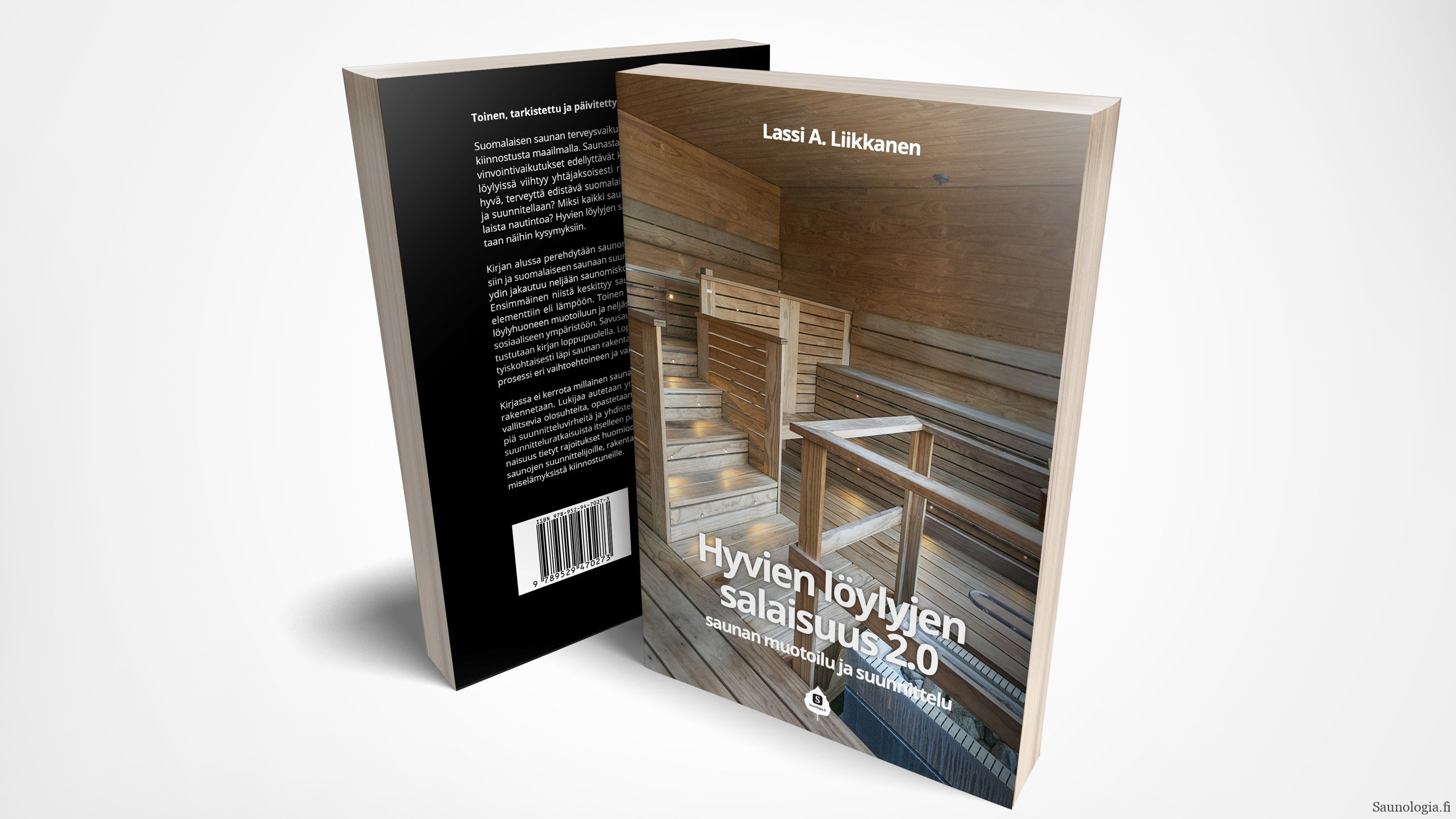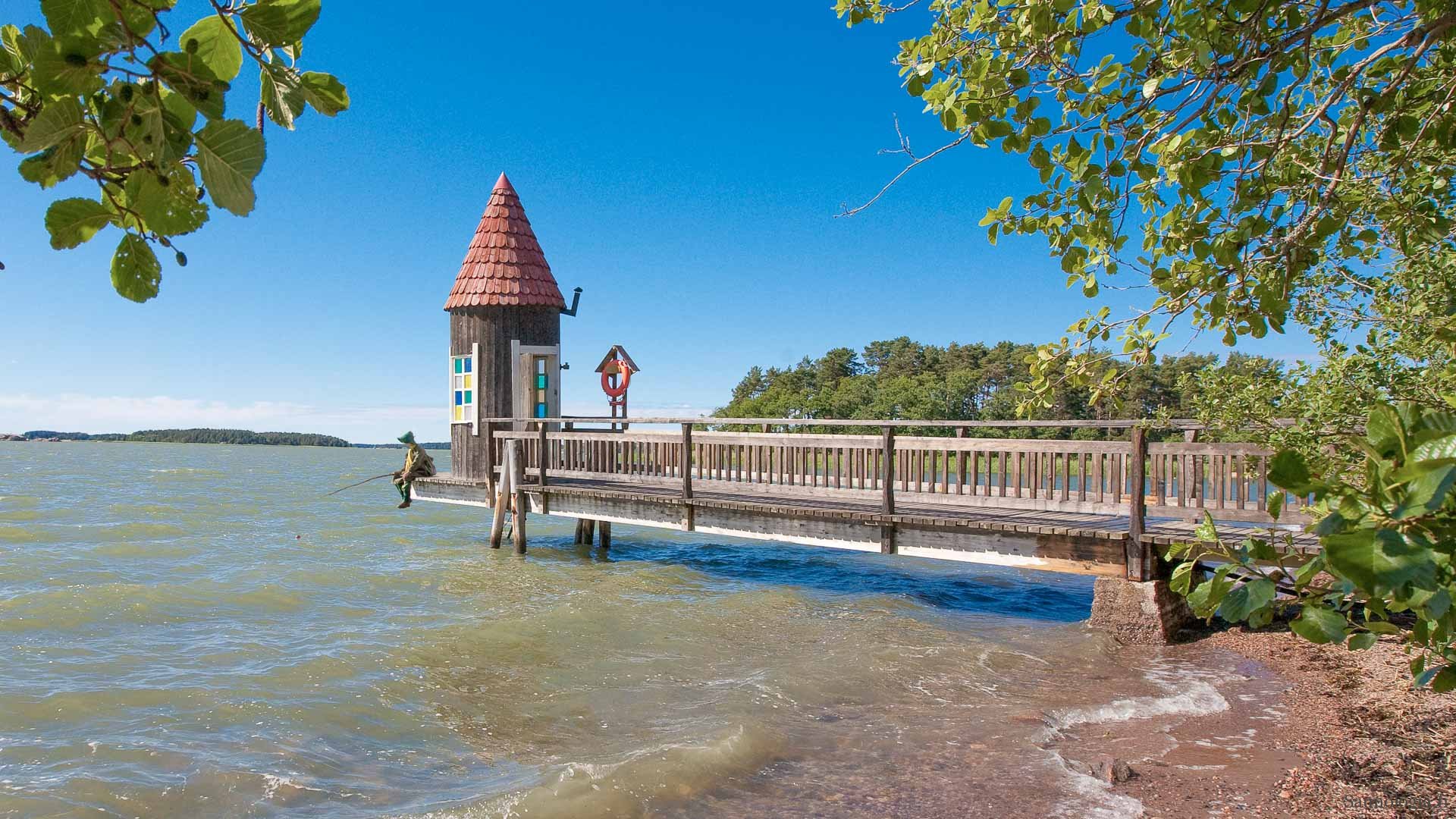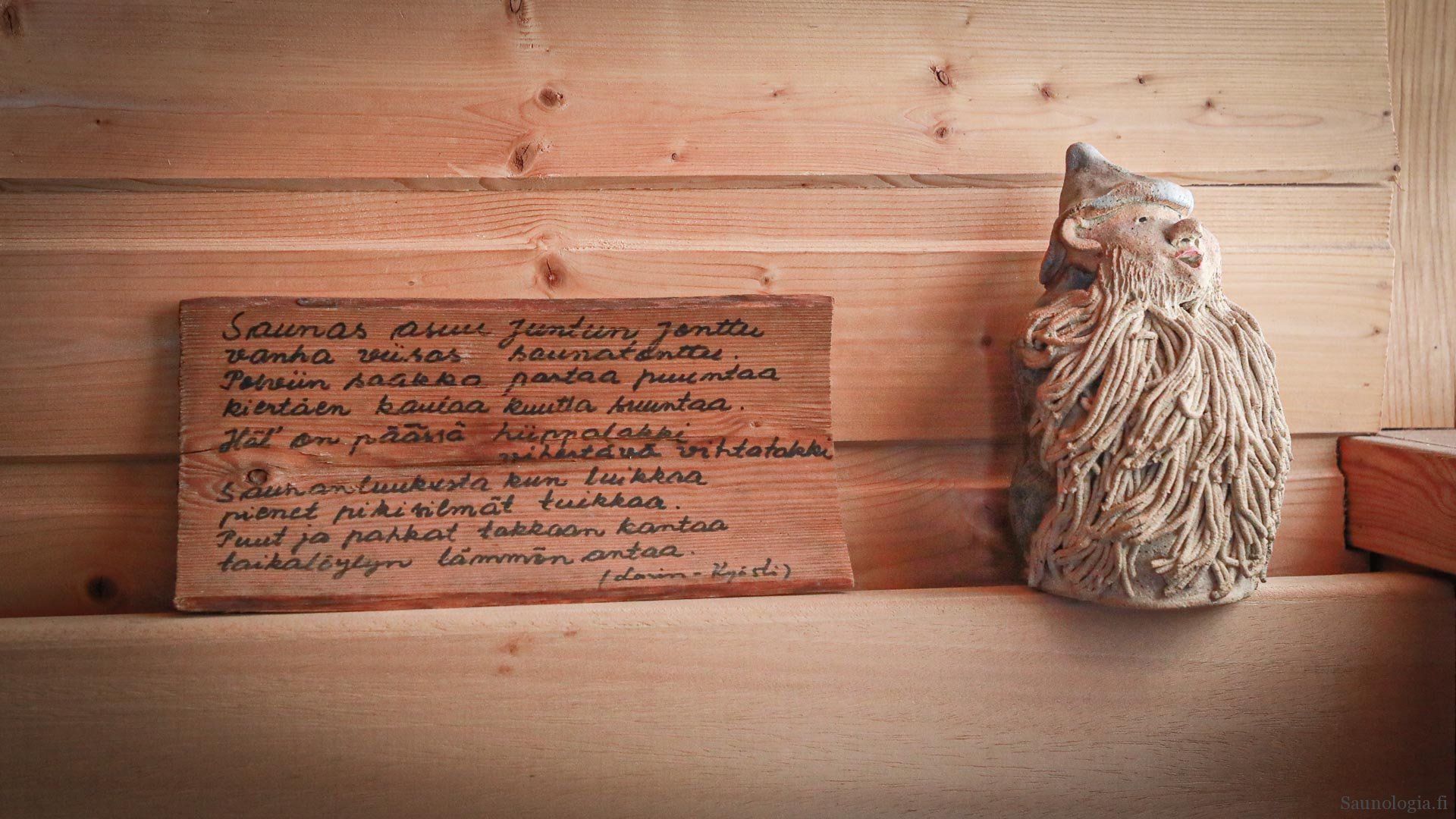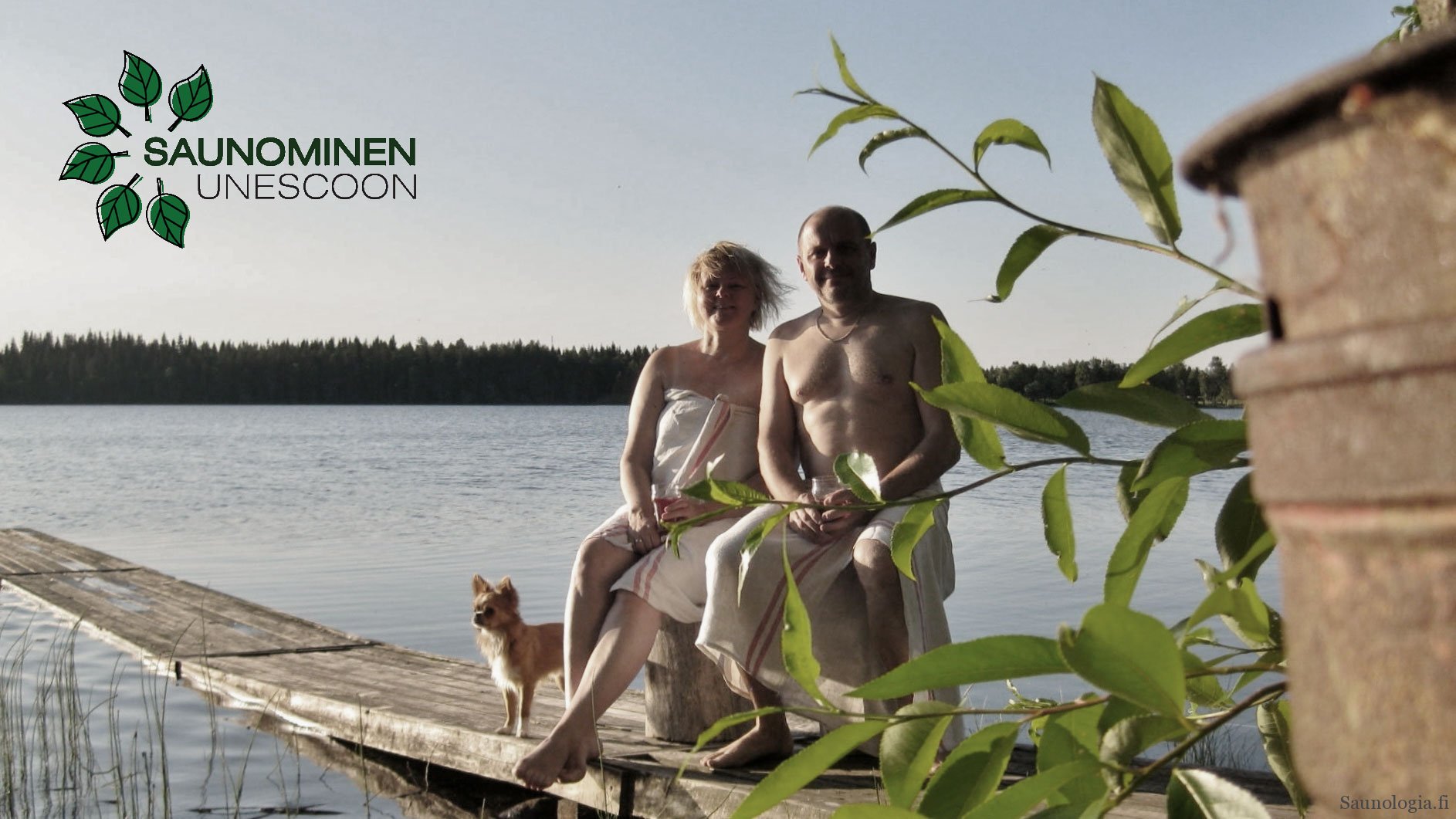Is hammam a sauna? Comparing two iconic thermal experiences
A hammam is not a sauna. The Turkish bath, known as hammam, is a bathing tradition from the Mediterranean region that is poorly understood in Finland. Public hammams don’t exist in Finland; some Estonian spas nearby have facilities labeled hammams, but the closest authentic versions true to tradition are primarily found in Central Europe. From there, the journey to the bath’s homeland is short. The Finnish Wikipedia refers to hammam as a Turkish steam bath and as a Turkish sauna. I will now explain, based on a comparison hammam and sauna technology, why a hammam is neither a Turkish sauna nor a steam bath.
History of Hammams
The word hammam (حمّام) originates from Arabic, meaning a place associated with warmth and bathing. The history of hammam bathing is well-documented. It is connected to the collapse of the Roman Empire and the rise of Islamic empires in North Africa and the Mediterranean region. Simplified, Muslims adopted elements of ancient Roman bathing culture, motivated by religious hygiene requirements—especially the ”ghusl” ritual, requiring a full-body bath. Hammams satisfied this need. The Roman hypocaust heating system was readily adopted into simpler, purification-focused hammams.
The golden age of hammams was during the late Middle Ages, notably the Ottoman Empire (later Turkey), from the 1300s to 1800s. As the Ottoman Empire expanded around the Mediterranean and Africa, hammams were established in new territories. ”Ottoman bath,” another term for hammam, dates from this period. Later in England, hammams were called Turkish baths.

Components of a Hammam
An original hammam was heated by a wood-fired hypocaust. The fire warmed the water, structures, and bathers directly, while smoke channels in the walls distributed additional heat. Heating was secondary, unlike saunas; the interior activities were more important.
Hammams, following Roman style, have three temperature zones: frigidarium (cool), tepidarium (warm), and caldarium (hot). The rooms have their Turkish names as well, and the cool room is usually used for dressing and lounge purposes. Large pools familiar from Roman predecessors are usually absent from hammams. Visitors spend time in all these rooms, but the main hammam rituals—warming up, exfoliation, and subsequent foam washing and massage—take place in the hottest, usually marble-lined room, the caldarium. The frigidarium served as a relaxation area after bath.
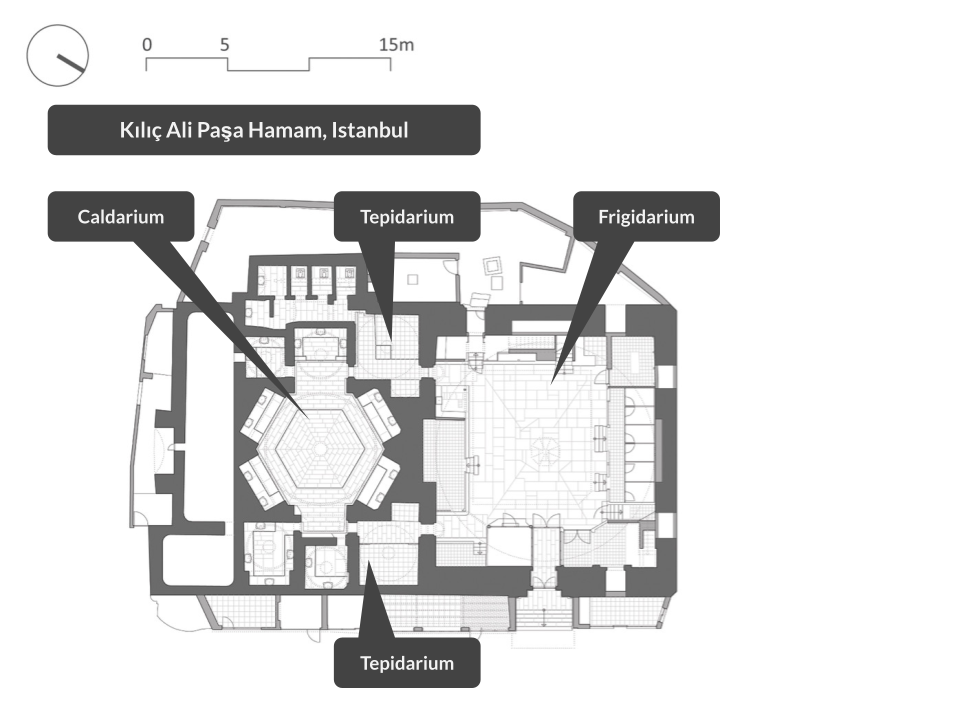
Modified from the original illustration with the permission from Ergin Iren
Besides bathing, hammams had various social significance. For example, in the restricted lives of certain Muslim women, hammams were among the few liberating spaces outside their homes to gather with peers and children. For example, during Sultan Suleiman the Magnificent’s reign (1520–1566), hammams specifically for women were constructed, highlighting the social importance of spaces beyond the caldarium. For a long time, people of different social and professional classes frequented their own hammams, for examples specific baths for sailors and tailors.
Hammam Heating Technology
The technical legacy of the Roman Empire survived through hammams more than a millennium after its fall. In contemporary Istanbul (known as Constantinople until 1930), parts of an almost 1,700-year-old aqueduct still stand, once supplying water to numerous hammams.
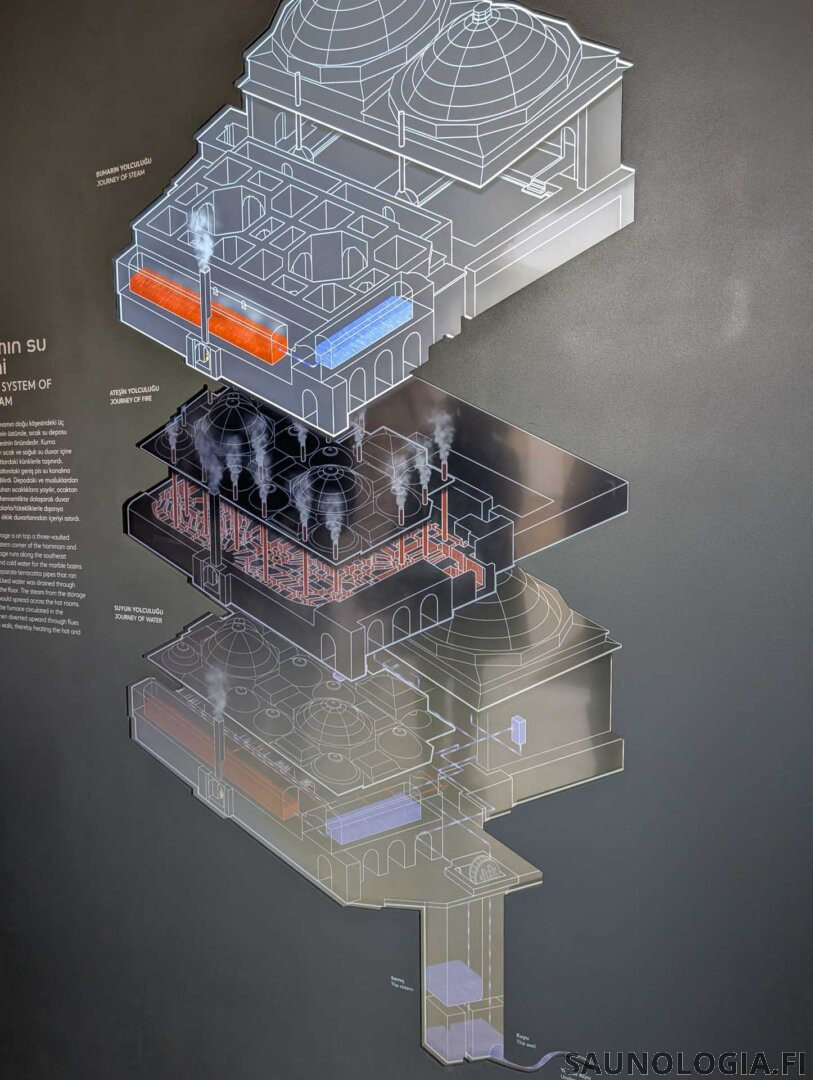
Today, for example, the Museum at Zeynep Cinili Hammam in Istanbul vividly illustrates historical techniques using various visual aids, though it operates with modern technology involving gas burners and large water heaters. The museum features an ingenious scale model of the old heating system, an animation explaining its workings, and a peek into its inner mechanisms. The original system ingeniously heated water primarily, producing steam as a byproduct, with heat from combustion gases warming walls through intricate ducts.
A single fire source, although sizable, was not immense. Daily wood consumption was substantial because of the continuous heating that was essential since reheating a cooled marble building would have taken several days.
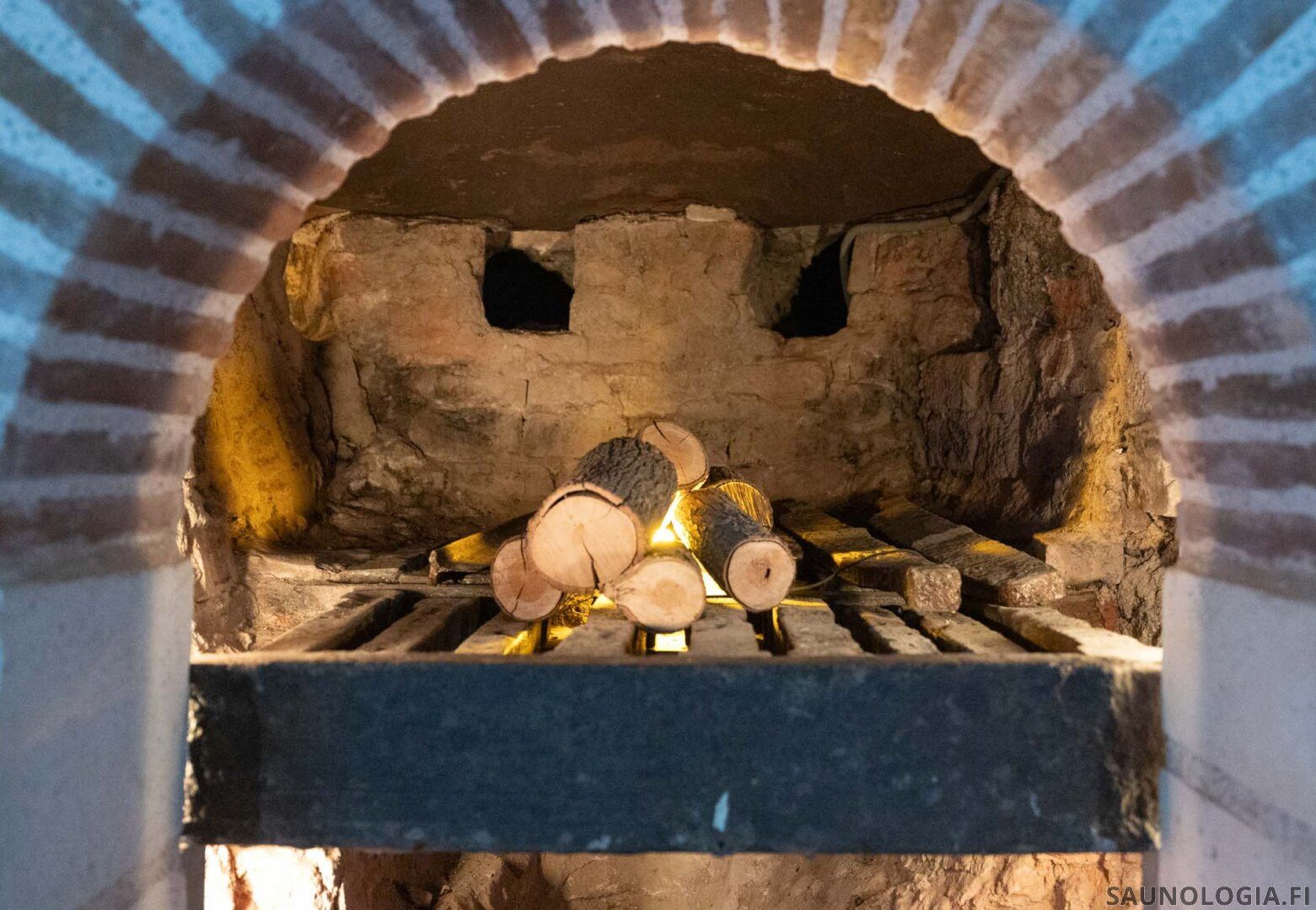
In Turkey, ”Marmara marble” from Marmara Island in the Sea of Marmara, south of Istanbul, has traditionally been used. This variety is known for its uniformly pale and smooth texture, facilitating harmonious interior designs and easy maintenance.
An intriguing detail in hammam “technology” tradition involves special footwear. Wooden sandals (nalin) protect feet from hot stone floors. Historically, when hammams were wood-heated, temperatures likely varied significantly, making surfaces too hot for bare feet. Modern hammams rarely provide wooden shoes, and according to locals, temperatures are milder (below 50°C) and more consistent thanks to modern technology.
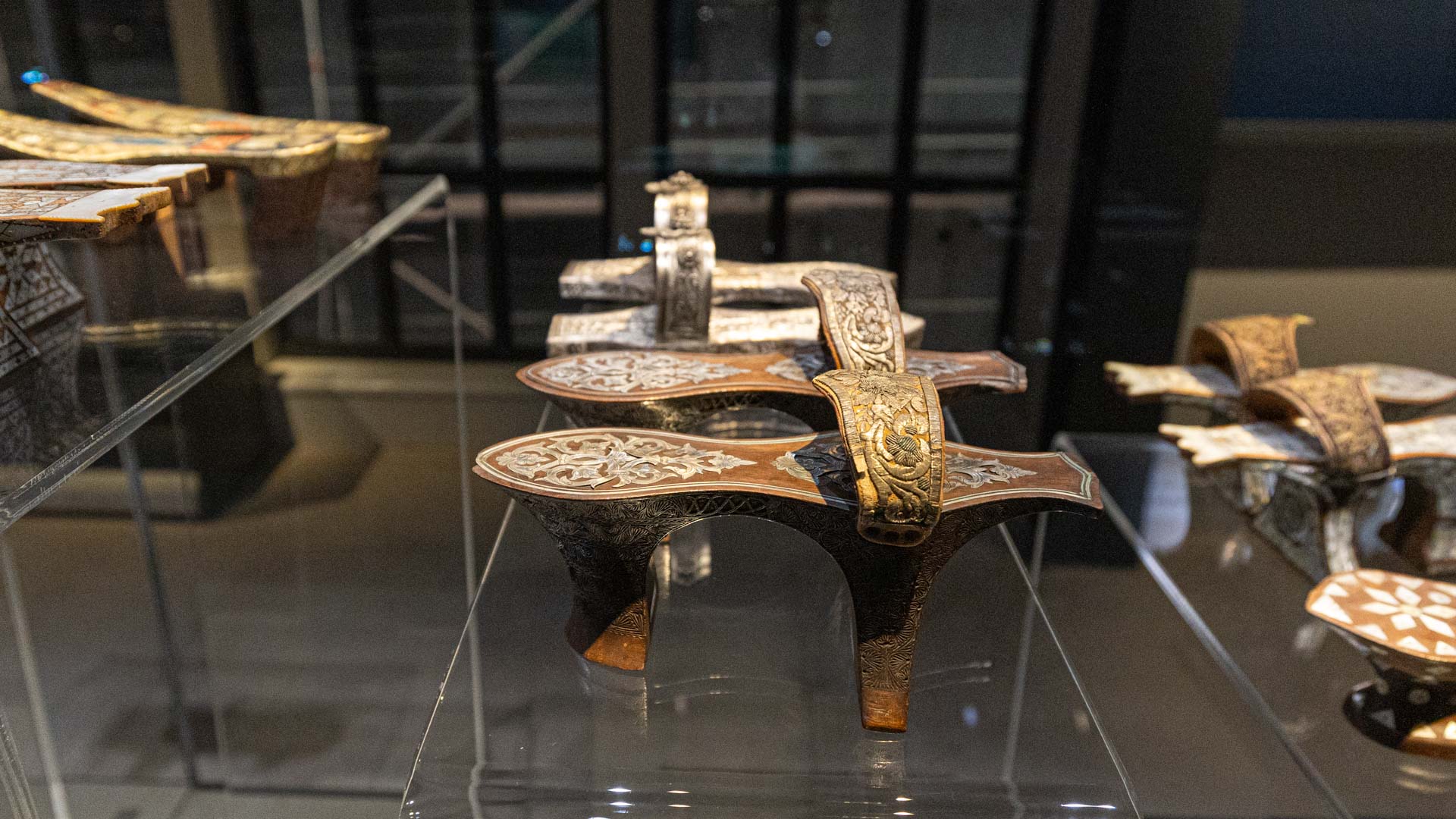
A Hammam is not a sauna
The Finnish word ”sauna” can be broadly applied, and that’s suitable when referring to spaces or events like peat sauna, bridal sauna, ice sauna, and more. However, using ”sauna” generally as a synonym for any bathing facility is inappropriate in my opinion even though commonly practiced by Finns .
Infrared rooms, steam rooms, and hammams are not saunas. Nor is a hammam simply a steam room; modern hammam humidity levels vary, often low, without deliberate steam generation. In ancient systems, steam was likely incidental from all the water used in washing, as well transferring large water masses with ancient techniques.
Many modern Western ”hammam experts” mistakenly assert that steamy interiors and shiny stone surfaces are hammam essentials. This perspective is inaccurate from the original, Turkish viewpoint.

Defining the Finnish Sauna
How then is a sauna different? One cannot answer without defining a sauna first. Several definitions exist; I prefer the International Sauna Association (ISA) definition, suitable for describing the diverse range of Finnish sauna practices across history. More complex definitions, like the Sauna Masters Guild’s 20-part 2023 definition, are overly restrictive and challenging to use. For my upcoming book ”Finnish Sauna” in English, published in autumn 2025 , I slightly adjusted my previous ISA-based definition. It goes approximately like this:
”A sauna is a hot room preferably made of wood walls. It is heated by a stove (kiuas), powered by electricity, wood, gas, or another energy source. The stove contains sufficient stones to produce perceivable steam (löyly). The stove can be heated before or during use. Sauna temperatures typically range from 60°C to 105°C (140°F to 220°F), measured a meter above the top bench or ceiling if lower. Humidity varies due to steam from stove stones, room air dew point temporarily surpassing human body temperature.”
A hammam is not even a bad sauna
Comparing a hammam against the Finnish sauna definition clarifies its incompatibility. A hammam is a spacious facility heated through floors and walls, often with high-domed ceilings pierced by holes. Built from stone, hammam’s humidity varies minimally, influenced only by washing water. Moisture isn’t intentionally manipulated to affect bathers. The only commonality is continuous heating.
When discussing hammams, no alternative term should be employed. The occasionally used Finnish term ”Turkish sauna” is derogatory toward both hammams and saunas and should be avoided. Hammams are for cleansing and socializing, not sweating. Public hammams primarily cater service experiences, with the space being secondary even though important. Conversely, a Finnish sauna provides the setting while each user individually creates their experience.
Huge Thanks to Elizabet Kurumlu (https://www.hailizhere.com/) and Ergin Iren for guidance and interviews.
